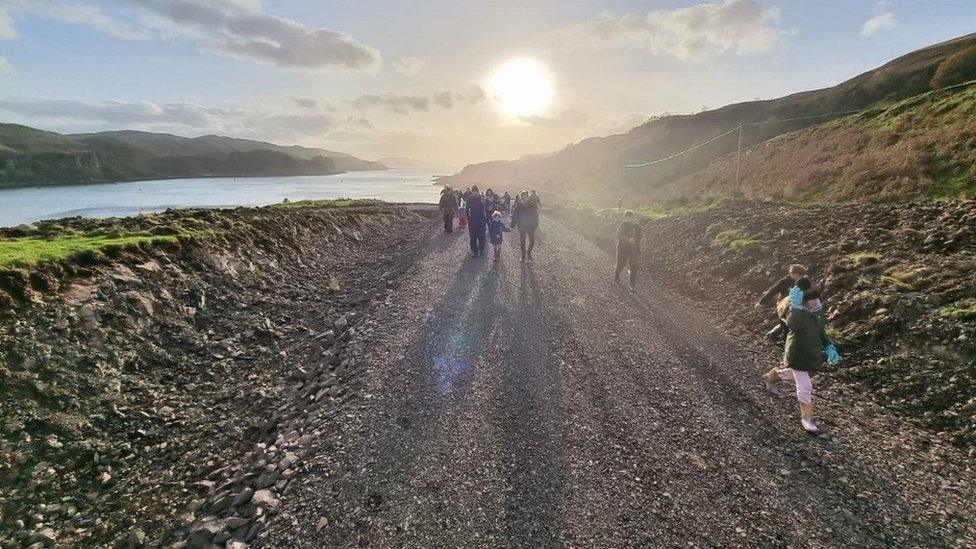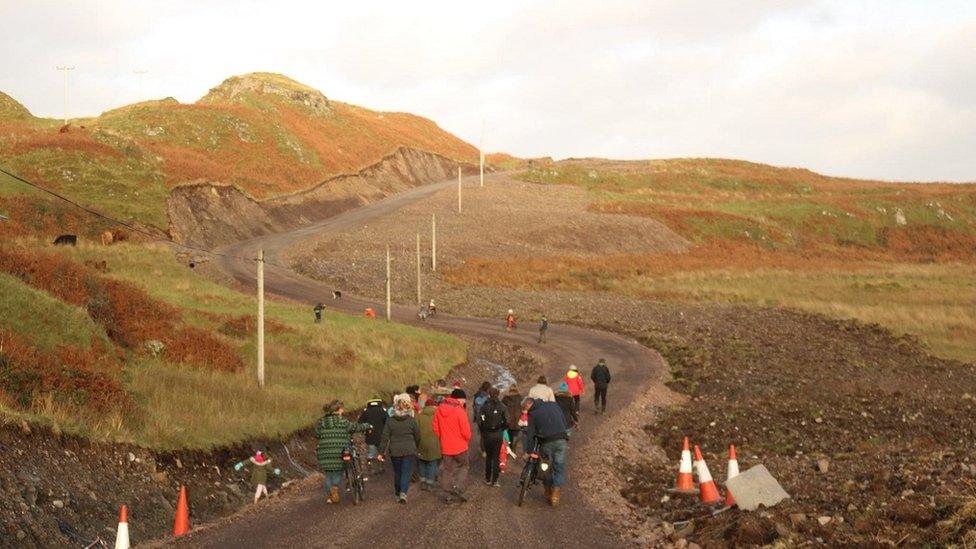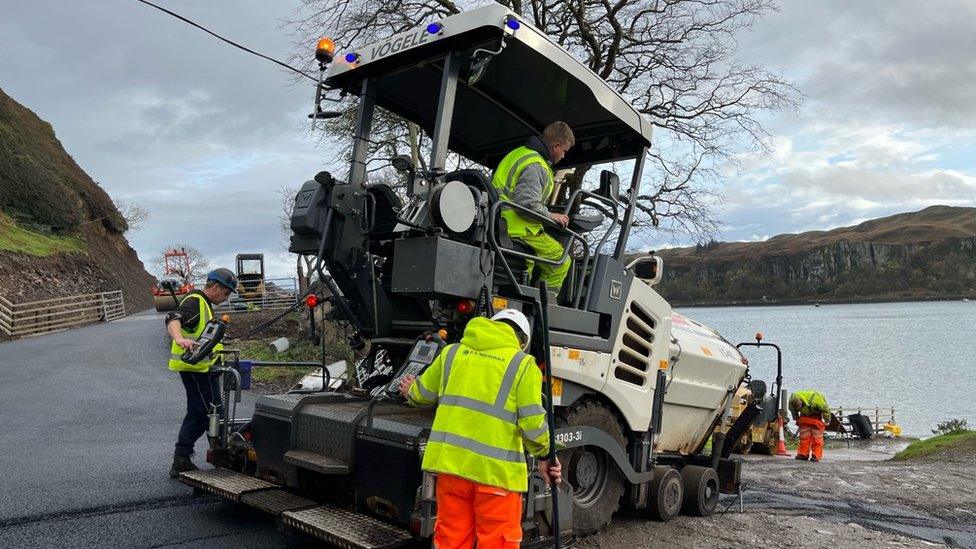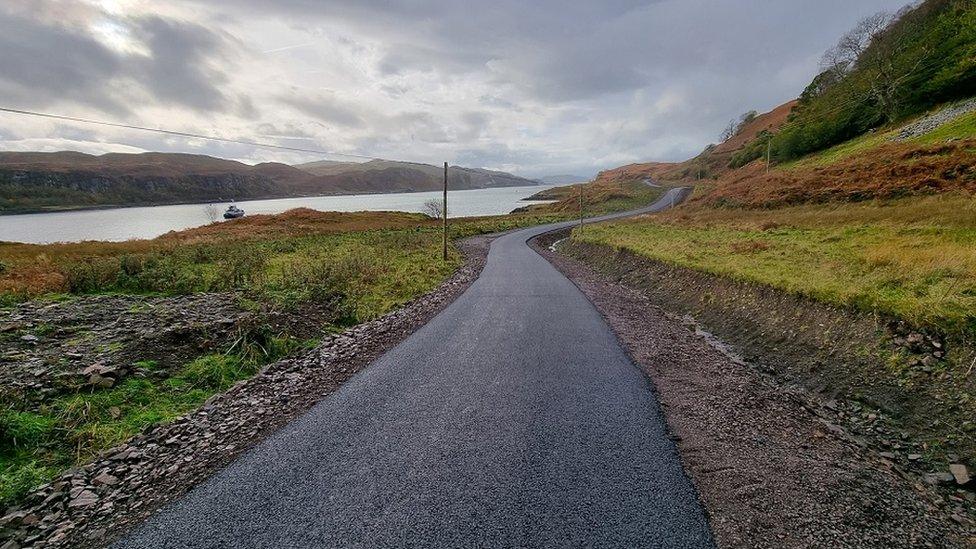Tiny Kerrera gets first tarred road across island
- Published

Kerrera's first road across the island opened last year as a forestry track
The tiny island of Kerrera has its first tarred road linking communities in the north and south of the island.
The mile-long route opened as a forestry-grade track in November last year. Work to tar the surface has now been finished.
Before the road-building project, islanders had to walk or use off-road vehicles to reach opposite ends of the four mile-long (6km) isle.
They campaigned for almost 30 years for a proper road across the island.
Kerrera is a five-minute ferry trip from Oban with a population of 70.
Resident Martin Shields, the road project's infrastructure manager, said having a surfaced road was vital to help Kerrera thrive.
He said: "The whole of the island has access to the marina now, and families can mix and get together for things like a Halloween party this weekend.
"This is the first major surfacing works that has ever happened."

The road last year before it was surfaced

The road now has a tarred surface

Islanders campaigned for almost 30 years for the connection between the north and south of the isle
The stages of the road-building project received funding from different sources.
The Scottish government provided £500,000 towards the first stage which involved constructing the forestry industry-grade track.
The second stage to tar the route received £200,000 of Crown Estates Coastal Communities funding and a private donation of £50,000.
Argyll and Bute Council, which administered the coastal communities funding, has congratulated the island community for the completion of the project.
Visitors are drawn to Kerrera for its walking routes, wildlife and history. Its wildlife include wild goats, ravens and seabirds.
Gylen Castle was built at the southern end of the island in 1582 by the Clan MacDougall and was left in ruins following a siege in 1647.